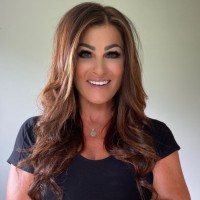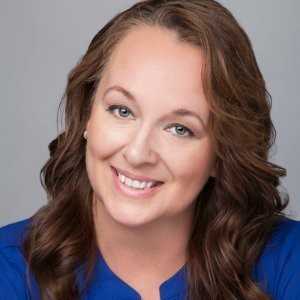Episode 168: Teri Long on Persevering Through Challenge to Drive Business Results
2.5K Views | 18 Min Read
Shawnna Sumaoang: Hi, and welcome to the Sales Enablement PRO podcast, I’m Shawnna Suamoang. Sales enablement is a constantly evolving space, and we’re here to help professionals stay up to date on the latest trends and best practices so that they can be more effective in their jobs.
Today, I’m excited to have Teri Long at CB Insights join us. Teri, I’d love for you to introduce yourself, your role, and your organization to our audience.
Teri Long: Great. Thank you so much for having me, I’m excited to be here. As you mentioned, I am the VP of our Sales Enablement at CB Insights. I’ve been in enablement now for about 15 years and am very excited that I’m able to pull together all of the previous experiences as a strategic account manager, corporate sales trainer, customer success, project manager, and incorporate those into our enablement program here.
CB Insights itself is a market intelligence platform that teams use to track and identify emerging technologies. We work with enterprise, we work with startups and essentially, we provide insights that they’ll need to buy, to build, to partner, to research, to invest. This is based on data, not based on opinion.
SS: Well, I’m excited to have you here. Speaking of data, or insights if you will, I noticed on LinkedIn that you highlighted that there’s a difference between sales enablement’s more traditional activity-based metrics and business impact KPIs. I’d love to jump in there first. In your opinion, what are the KPIs that sales enablement practitioners should be tracking in order to measure their impact on business performance?
TL: Yes, it’s a great question and I’m really glad you asked it. Traditionally, enablement has been measuring along the lines of content. Content created, content consumed, number of trainings completed, certifications, who has been onboarded. All of those things are very important. The concern from an enablement perspective is they don’t correlate back to how we’re driving revenue at the organization or the impact that enablement is having on the organization.
Best in class from my experience and from what we have done is looking at a variety of different metrics. One, overall plan achievement. We look at stage conversion, time to first close deal, average deal size, sales win rate, our sales velocity. Even with our new hires, we’ll look at ramp and how long it’s actually taking them to get to a performing status based on different milestones that we give them. When we look holistically at enablement and the ecosystem that exists, all of these should be included in monthly and quarterly tracking so that they can align to our go-to-market OKR’s.
SS: I couldn’t agree more. I think that’s really critical when you set up your KPIs for your team and your organization. Now, I want to talk a little bit about the mindset that you need in order to hit some of these strategic business outcomes because you often talk a lot about a growth mindset. I’d love to understand from you, what does it mean to have a growth mindset as an enablement leader? How can that growth mindset lead to more strategic business outcomes?
TL: Yes, exactly. I do see enablement as a strategic function. The industry itself has become more visible and I think demonstrated in such a way that it is evolving into a strategic function by some of the top meters that we have. I think ultimately instead of having a myopic view solely focused on the enablement team and the function, you really have to start with an outward in approach.
That new lens that starts more at the executive go-to-market level. I equate it oftentimes to how we teach our sellers to do their job. They’re in a position where they need to align to the buyer’s journey and help their buyer through that process. It becomes much more strategic when you take that approach. What are you trying to accomplish? Why? What is the growth strategy? What are the KPIs? Really starting to understand where enablement plays a role and what the levers are that we can pull to really have an impact in drive growth.
If you look at what I would consider our top three, it’s accelerating speed to revenue, it’s increasing individual seller productivity, and creating raving fans. Being very focused on results, driving the sales velocity, and overall sales productivity is really done through assessment, operationalization, and optimization.
SS: Well, that’s fantastic. Now, I want to shift gears a little bit because I think the past 18 months or so have been quite challenging, and you wrote an article on LinkedIn titled “Don’t Limit Your Challenges, Challenge Your Limits,” which I love. How can sales enablement leaders help reps challenge their limits and reach peak performance?
TL: Well, I appreciate you bringing that article up, it was a fun one to write. I think there’s a few things that we need to do. First, we really need to become a trusted advisor and start spending time in their world, our sellers’ world, so that we can experience their challenges firsthand. The second thing, we really need to dive into data. Make sure that it’s not just our opinion. While there’s objective and subjective pieces to every situation, that data can really help us better understand the insights around leading and lagging indicators that we can then start using better in our coaching. That data gives us immediate feedback and it can help us with our sales leadership team course-correct more quickly and not stalling out and not making changes as quickly as we might need to.
Third, I would say using the enablement systems to build out scorecards to benchmark so we can really understand impact over time. It’s become a way to focus on overall performance and growth trajectory. When we coach to this, we oftentimes say, hey, let’s start with the end in mind. Where do you want to be? What’s the baseline and how do we help you create that roadmap to get there? What are those levers that we need to help you with?
The fourth thing, as simple as it sounds, it’s celebrating the small wins. Especially right now, we’re seeing that when we see the right performance, we need to say something. We need to recognize it. It’s such an important step in the process and reinforcing the behaviors we want to see both in enablement and with our sales leadership, we just cannot underestimate the value of this step. Validation can be a key driver in moving the needle on performance.
SS: I love those four tips; I think those are fantastic. I want to press on along the topic of challenges because I think this past year, as I mentioned, has really challenged all of our limits with the shift to virtual work environments. Now we’re in this weird limbo land at the moment with this pending transition to potentially hybrid or in-person environments again for some organizations. We’re all hoping there’s light at the end of the tunnel for sales enablement leaders. What are some best practices for really helping the entire organization, but especially the fields teams, navigate all the change that’s happening? What are some best practices around effective change management essentially?
TL: In terms of change management, there’s a lot of great resources out there and we really follow John Potter quite a bit. It’s about the head and the heart, it’s if I can see it and if I can feel it, I can make the change. That oftentimes is much more effective than analyzing the information, thinking about it, and then expecting change to happen.
Ultimately why we see that as a much better approach is once there’s an emotional reaction, there’s a desire to make a change. Again, I equate this back to think about how we teach our sellers to sell. It’s no different than taking a customer through a pain funnel or through rational drowning and emotional impact as we teach Challenger Choreography for instance. When you look at that holistically, I would say to be very specific, it’s about having empathy, it’s about empowering, and it’s about engaging.
Breaking those down a little bit more, I would say empathy with objectivity. The last year has been absolutely an entire shift to businesses, to how people work. I don’t think I need to go into all of the details. We have to be very aware of how we’re responding to the team and ensuring that we’re giving them the right tools to do their job. Reviewing tech stack, for instance, what is our tech strategy? Do we have the right tools in place not only to help them do their job, but to provide them the resources that they’re going to need? Maybe it’s mentally, emotionally, physically, the whole myriad of different things. Really taking some time to evaluate, do they have the skill? Do they have the will? How do we help them get to a point in time where they’re comfortable doing what they need to do from a delivery perspective? That’s why I say there’s that empathy with objectivity. We have to perform, we’re here to drive revenue. We also need to ensure that we’re taking that lens and shifting it slightly so that we can be more reflective.
I think the second thing I mentioned on empowerment, this is all about, again, going back and ensuring that we’re engaging them and helping them identify areas of growth. Scorecards, for instance, coaching on specific skills that we’ve identified in heat mapping, soft skills training, and elevating managers. We’ve really invested a lot of time and energy in ensuring that we’ve helped our managers get to a point in time where they are delivering at the level they need to, to help their teams be more successful.
The third thing is engagement. I think this oftentimes gets overlooked and in the situation we’re in today, it’s really easy to check out. Being incredibly intentional about engaging early and often with the teams is key. Doing a listening tour. I did one a couple of months ago and spent time listening and engaging with over a hundred people in the organization. There were so many great insights that came out great ideas. It also gave people an opportunity to just feel heard. I think we have to, again, not minimize that, especially in times of uncertainty. Those three things really have been key, I believe, in helping us drive some of the change.
SS: I love that. Empathy, empowering, and engaging. I think that that’s a fantastic approach. Now, if I take a slightly different lens to almost the same question on the topic of change, the market is continuing to evolve and buyers, their needs are continuously shifting, especially right now. How can sales enablement help ease the pain for sales reps amidst all of the shifting business landscapes and really help them adapt quickly to the changing buyer needs?
TL: Great question again. From our perspective and my perspective individually, I think it goes back to ensuring you’ve got a very strong sales buyer and customer journey. Do you have those documents? Do those align to each other? Do they overlay on top of each other the right way? Do they align to the sales stages? That’s one way because without clear identification of the sales journey, the buyer’s journey, and the customer journey, we really become lost. We’re doing things that may or may not be driving the right behaviors to get to the results.
The other thing is having really strong partnerships with product and marketing to evaluate things like the buyer persona, the markets and the trends, and creating seamless access to assets that the team is going to need organized by roles, stages, verticals. Having those integrated and served up as prescriptively as possible so that we are making their job easier to do and not forcing them to shift between different systems every two seconds. Taking some time to do win-loss analysis has been really helpful in taking those insights and making them actionable, providing that information back to product, to marketing, to leadership essentially, sales, so we can pull different levers again to actually affect change.
I think the last thing is around messaging and ensuring that as we are teaching our teams to message proactively through their prospecting, include relevant CTAs. What are those call to actions? Do they mean something again? Are they provoking an emotional response with our buyer? If they’re not, then we need to re-evaluate that.
SS: I couldn’t agree more. This has been fantastic, Teri. Now, I have a closing question for you on another article that you wrote around perseverance, which has really been a necessary pillar these past few months for a lot of businesses. From your experience, what are some key strategies to really motivate teams to persevere through the challenges and the change that will lead to business success?
TL: Focus on the long game. It’s about focusing on the long game and making sure you know what success looks like. While success can shift over time, having clear milestones of what the element of success could look like one month from now, three months, six months, a year. Business planning, looking into the three-five year. I think those two things are critical. Then ensuring that you have a clear intention. In a world where we’ve got so much focus on instant gratification, we really have to rewire ourselves to understand some of this takes time. It takes time to nurture, it takes time to see the changes. It really isn’t going to be as quick as I’m going to send you a text and get the result right back. Everything that we’re working on is shorter long game, but to get to where we’re going to need to be at is a long game.
I go through this exercise. We take our teams to these exercises about reverse engineering their roadmap. What is that going to look like for you? Whether that’s about you hitting your number, maybe it’s a personal goal, maybe it’s a professional goal, whatever that is, how do we reverse engineer that roadmap and help you anticipate obstacles or challenges that might be coming up? How do we help you be agile and adapt? Are there skills that you need? Is there coaching? Is there a tool that will help you do that? We also encourage it’s okay not to know. Sometimes you just don’t know, and you can get better at accepting that there is ambiguity and that’s okay, but taking a step back to always reprioritize, look at that roadmap, make sure you have the self-discipline to keep moving forward even if you do fail often.
One thing that we do here at CB Insights is focus on draw the owl. If you’re not familiar with draw the owl, the concept is about honoring a core value and realizing that when there’s no clear roadmap, no directions, you still just go for it. You just keep moving forward. I think it really boils down to being intentional and you just make a decision each morning to get up, make that next right decision, and move forward.
SS: I love that advice. Teri, thank you so much for joining us today. I learned a ton from you, and I appreciate the time.
TL: Absolutely. Thank you again.
SS: To our audience, thanks for listening. For more insights, tips, and expertise from sales enablement leaders, visit salesenablement.pro. If there’s something you’d like to share or a topic you’d like to learn more about, please let us know. We’d love to hear from you.















